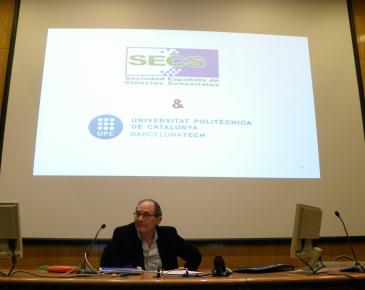The Holy Grail of the Ofactory Code
November 1, 2011

Disclaimer: The views and opinions expressed herein are solely those of the author and/or guest contributors and do not necessarily state or reflect those of
The Perfume Magazine LLC, Raphaella Brescia Barkley or Mark David Boberick.
All content included on this site, such as text, graphics, logos, icons, videos and images is the property of The Perfume Magazine, LLC. or its content suppliers and protected by United States and international copyright laws. The compilation of all content on this site is the exclusive property of The Perfume Magazine, LLC. and protected by U.S. and international copyright laws.
The Perfume Magazine Banner was designed exclusively by GIRVIN and is the property of The Perfume Magazine, LLC. and are protected by U.S.and international copyright laws. Additional Banner information can be found on our ABOUT page.
All images appearing in the banner are registered trademarks of their respected company and are used with permission.
© Copyright. 2011. All Rights Reserved. The Perfume Magazine LLC
By Francesc Montejo Torrell
Co-Founder, creator and artist of A Dozen Roses, Sandy Cataldo, signing bottles
The Shape Theory
In 1969, John E. Amoore, an English biochemist claimed that odorants were recognised by olfactive receptors in the same way a lock recognises a key. He established a classification of the different families based on the shape of the odorants. John E. Amoore considered that the specificity between the odorant and the receptor was high: each molecule was to be recognised by one only receptor, and the other way round, each receptor would mainly recognise one kind of molecule. But it has been shown that the human being is able to perceive more than 10000 different smells, so the number of receptors that would be necessary in Amoore’s theory would be too high. Recent experiments in this field have allowed the solution of this problem: the human being has approximately 350 functional receptors, but the specificity of the receptors is not as high as it was initially expected. Consequently, an odorant is capable of activating different kinds of receptors and each receptor is activated by different kinds of molecules. Each receptor does not totally recognize a specific shape of the molecule but certain molecular features, named as osmophores by some investigators.
A Wonderful Journey
The Sensory Design of Fragrances
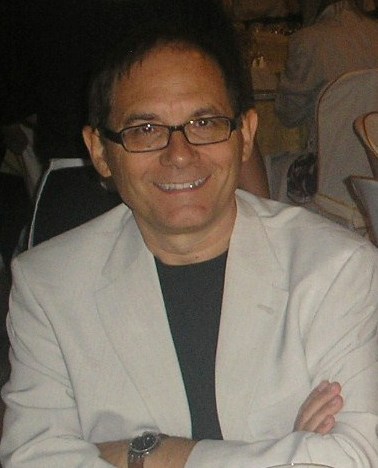


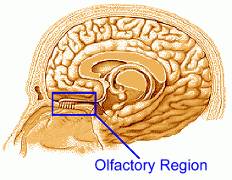
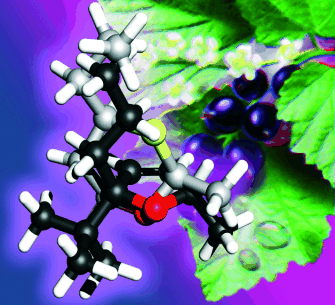
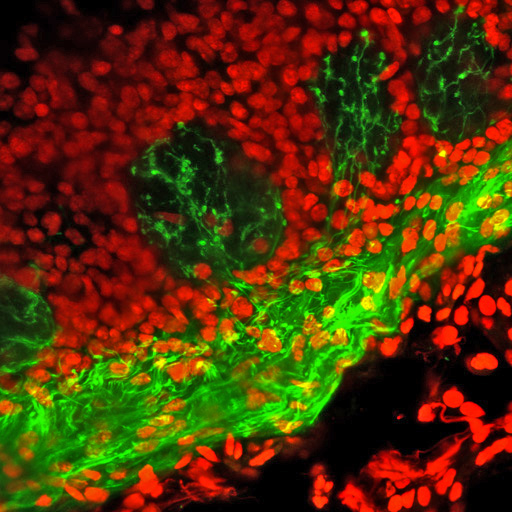


About the Author
Francesc Montejo Torrell is currently a biochemist and is head of Inn Flavour's, company belonging to a Food Science and Fragrance Consulting group. He was head of research and development of Givaudan, Diversey Lever, Dragoco and has worked with Cosmos Aromática and Nestle Group.
Professor Francesc Montejo Torrell has been a guest speaker numerous times speaking about The Secrets of Olfaction and Design of Flavour's of the Future. He has been published in Perfumer& Flavorist Magazine and has had many papers published on the subject of Olfaction. He lives in Barcelona, Spain.
Francesc Montejo Torrell will be working with The Perfume Magazine on future projects and will be featured in special issues.
The Perfume Magazine welcomes him warmly.


We are in the olfactory epithelium. Some of the molecules get trapped in a viscous sea, the olfactory mucous, an extracellular fluid of aqueous nature. The molecules interact with the different types of receptors, until they find one that gets activated, the way a key enters a lock. We could count up to approximately 350 different kinds of such locks. The olfactory receptors would be located in the cellular membrane. Let’s imagine a soap bubble in water that has in its turn another substance in dissolution. Receptors would be inserted in the membrane and would permit the “communication” between the exterior of the bubble and the interior.
When a molecule attains its objective, a conformational change in the protein provokes the flexion of the whole structure. This makes a sort of thread ball squirm, which activates a switch that triggers the fast movement of a convoy of minute electrical charges. We have just described the fundamental mechanism that allows an odorant to bond to an olfactory receptor. These olfactory neurons are ciliar cells, which makes the total receptor surface to increase in a remarkable way. The molecules that accomplish their objectives bind to the active centre of the helicoidal protein 7 transmembrane by means of electrostatic interactions that cause a conformational change in the protein. As a result, some changes are induced to a G protein. The G protein is in the intracellular domain of the neuron, inside the neuron there is a protein that realises that the receptor has undergone a change in its shape. This behaviour triggers a series of chain reactions that transmit electrical impulses at high speed to the olfactory bulb glomeruli.
The Combinatorial Model

As in a science fiction movie in which the main characters were reduced to a microscopic size and travelled in a submarine in the inside of the human body, I propose to you the magical adventure of crossing the bridge of the knowledge on the olfactory perception.
Imagine you that we are in a garden in springtime. We observe hundreds of thousands of odorant molecules floating in the air. They come in different shapes and sizes. Because of them at the end of our sensory excursion we will be able to enjoy the marvellous fragrance of some roses.
In The Realm Of The Olfactory Bulb
Continuing our trip in the olfactory perception we find ourselves in the olfactory bulb. Thousands of electrical messages coming from the neurones of the olfactory epithelium converge in meeting points or spherical collectors called glomeruli. Each glomerulus harvests the information of a certain odorant range that share similar molecular characteristics actually, input from a single type of olfactory receptor.
Glomeruli with similar molecular ranges are located near others, constituting clusters. The three-dimensional distribution of the glomeruli in the olfactory bulb is not random, but it obeys a molecular logic that allows the olfactory software to read odorant family patterns. The three-dimensional disposition of glomeruli inside the olfactory bulb seems a key factor so that the olfactory software is able to process the information.
The combinatorial model explains quite accurately the mechanism of the primary olfactive reception. Now we will explain how it works. Molecular biologists Richard Axel and Linda Buck of the Columbia University in New York published in 1991 in Cell, a paper on the nature of the olfactory receptors for which they were awarded with the Medicine Nobel Prize 2004. In this paper they cloned and characterized 18 different members of a gene family that codified a group of proteins able to act as olfactory receptors.
In March 1999 a group of investigators, Linda Buck and Bettina Malnic from the Harvard Medical School and Junzo Hirono and Takaaki Sato from the Life Electronics Research Center in Amagasaki in Japan deciphered the mystery of how the brain picks up smells. They used a method in which they exposed mice neurons to several different kinds of odorants. Via a technique of calcium visualisation, the investigators detected which were the nervous cells triggered by a certain smell. When an odorous molecule got bound to an olfactory receptor, the calcium channels in the cell membranes opened and the calcium ions entered the olfactory neuron. The images of the calcium ions gave information on the flow of these elements. This is how they corroborated, as we have stated before, that an olfactory receptor can recognise several different odorous molecules and that an odorous molecule can be recognised by several different receptors. These results are of exceptional value to understand how the olfactory system works. These conclusions show that the different olfactory receptors operate using a combinatory code.
The different receptors behave, as we have seen, like the letters of an alphabet. In our case it has approximately 350 letters. Let’s now think of how many words of two, three, four or more letters we can build with our alphabet. Each “word” will represent a unique olfactory sensation in the brain. This mechanism allows us to have an idea of the great discriminatory power of the described model.
The fact that each olfactory receptor has a receptive range for different kinds of odorants has been verified as well. The selection is done according to the characteristics of the odorant molecules, whether it is by structural similarity or by chemical global chemistry. The inhibition effect of molecules that compete with other molecules for a union site has also been observed. In pharmacology the antagonism phenomenon is widely known .When a perfumer or a flavourist formulates a product it is sometimes very difficult to foresee the sensory result of making slight changes in the formula. The mentioned inhibitory aspects are could be responsible for some of such distortions.
The Holy Grail Of The Olfactory Code
In the figure below, the different stages of our imaginary trip can be visualised. Our journey as privileged spectators has lasted some minutes, but the olfactory perception is actually produced in really brief fractions of time. This way, living beings are able to constantly interchange information with their environment. This interactivity is a key factor to their survival.
Olfactory perceptions do not exclusively obey to the chemical stimulus of the odorous molecules: they are the global addition of a sensory perception, gestalt, as the psychologist Wolfganf Köhler conceived it. In such perception there is a confluence of stimulus coming from other senses such as vision, touch and taste or from the trigeminal nerves. After everything that has been explained, we are capable of affirming that the olfaction is the result of the specialisation of our neurons and the functionality of our nose as a detector of odorants.
In a future the combinatory model will reveal us how each of the approximately 350 kinds of glomeruli in the olfactory bulb recognises the different molecular structures of the odorants. We will possess an olfactory map that will be contrastable with the sensory smell maps proposed by several authors A better understanding of the dimensions of the perceptual olfactory space from the sensory point of view, how the brain processes the information, and from the physiological point of view, how receptors and glomeruli are activated, will make us closer to the old dream of a possessing the magical odour predictor algorithm one day. The white coat detectives will have discovered the Holy Grail of the olfactory code. Understanding how the sense of smell recognises the chemical information of odorous molecules has a transcendental importance for subsequent investigations. In a future, we may be able to design tailored odorous molecules, making them smell as we wish. However, there are still many questions around the olfactory software of the brain and other aspects of olfaction on the air, but this we will leave for another time.
It has been shown with the use of topographic maps of the olfactory bulb that essential oils of fennel and clove activate glomeruli clusters near to those that are activated by alquilamines, responsible of the bad odor of food in poor conservation conditions.
As a result; the alquilamine clusters get the order of inhibiting of their functions. To the order of the glomeruli activated by fennel and clove, to be more precise by their main compounds, anethol and eugenol respectively, mitral neurons no longer transmit the mentioned messages. This explains the important historical role of these spices as culinary ingredients. The evolution of the olfactory system responds like this to one of its multiple vital necessities.
Electrical impulses coming from a same type of receptor group themselves and they travel together through the neuronal highways called axons. If we could visualise all the sparks coming from the approximately 350 different kinds of receptors, we would see the intensity differences of each of them in a given fraction of time. This virtual intensity corresponds pretty well to the olfactory intensity with which we perceive the different odors. An instant photography of the situation would allow us to contemplate the different kinds of receptors activated in that precise instant. This information is important to the computation of chemical signals of the odorous molecules.
Synaptic Glittering
Information travels to the olfactory cortex through synaptic connections between mitral neurons. It is there processed by an extraordinary computer that uses the most incredible software imaginable. This brain software is constituted by a large number of neuronal networks that transmit valuable information. Watching these synaptic scintillations would be an awesome show. In the brain cortex, together with the hippocampus and other parts of the brain, millions of “bits” of information are interchanged in fractions of second. The inputs from a given glomerulus diverge to multiple olfactory cortex areas. This divergence of inputs of the olfactory receptors allows a parallel processing of the signals that are combined or modulated in different ways before being sent to regions of the brain having different functions.
The olfactory cortex is structured in layers where the information is decoded from the bottom to the top. The lower layers have their evolutive origin in ancestors of the hommo sapiens. Thank to this structure, based on the layer hierarchy, different aspects of the olfactive abstractions are processed and identified as a certain odour in the top layers.
Right Image: To the left odorous molecules of different shapes that lead to receptor proteins are observed. In the middle some odorous molecules are activating olfactory receptors and triggering a flow of electrical signals, indicated with arrows. Then we can see axons that converge in different sorts of glomeruli and to the right synaptic connections in the olfactory cortex. This image supplied by author.
All other images supplied by Editor
Bubble image courtsy of Wikipedia, Phys.org
